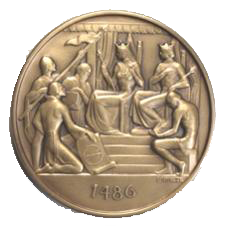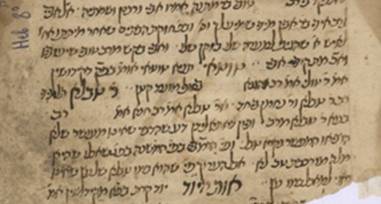|
|
INDEX
People
Abravanel,
Don Isaac
Berg, Gertude (Molly Goldberg)
Berg, Moe
Berle, Milton
Berlin, Irving
Bernstein, Leonard
Brandeis, Louis D.
Cardozo, Benjamin
Einstein, Albert
Elion, Gertrude
Frankel,Jacob
Gershwin, George
Ginsburg, Ruth Bader
Gompers, Samuel
Goode, Alexander
Goodman, Benny
Gratz, Rebecca
Greenberg, Hank
Hillman, Sidney
Hoffman, Jeffrey
Houdini, Harry
Jefferson, Thomas
Karpeles,
Leopold
Lamarr, Hedy
Lazarus, Emma
Lehman, Herbert H.
Levy, Asser
Levy, Uriah P.
Magnes, Judah L.
Meir, Golda
Miller, Arthur
Myerson, Bess
Noah, Mordecai E.
Ochs, Adolph
Pulitzer, Joseph
Resnik, Judith
Rose, Ernestine
Robert
Rosenthal
Ross, Barney
Salk, Jonas
Salomon, Haym
Santangel, Luis de
Sarnoff, David
Schick, Bela
Seixas, Gershom M.
Singer, Isaac B.
Jerry Siegel and Joe Shuster
Stern, Isaac
Straus, Isidor & Ida
Strauss, Levi
Streisand, Barbra
Szold, Henrietta
Torres, Dara
Torres, Luis de
Touro, Judah
Washington, George
Wiesel, Elie
Wise, Isaac Mayer
Zacuto, Abraham
|
 |
|
Introduction
Jews have made important contributions to the history and culture of America for over 500 years. This virtual tour gives brief sketches of people, places and events that are recognized by the Jewish-American Hall of Fame and have significantly influenced future generations.
Discover how the navigational innovations of Rabbi Abraham Zacuto enabled the European discovery of America, and that one of the first rights fought for and won by Jews in America, was the right to bear arms in the local militia (Asser Levy). Read how the man who raised funds for the American Revolution died penniless (Haym Salomon). Meet women who were pioneers in education (Rebecca Gratz) and equal rights (Ernestine Rose).
Acquaint yourself with the leader of a nation (Golda Meir) and with a leading entertainer (Barbra Streisand). You will find the famous (Einstein and Houdini), as well as those whose names are not household words (Judah Magnes and Bela Schick). There are legends in sports (Hank Greenberg) and music (Benny Goodman).
Be surprised that a movie star’s (Hedy Lamarr) invention made cell phones possible, and how the research of a recipient (Gertrude Elion) of the Nobel Prize in Medicine has saved millions of lives. Plus much more –– like the Jewish heroes and heroines of the Titanic disaster (Isidor & Ida Straus and David Sarnoff), and the benefactor (Joseph Pulitzer) of the prestigious Pulitzer Prizes.
Walk through
the virtual tour in chronological order, or just click on people,
places, and events of interest.
Entries
are illustrated by the limited edition commemorative medals that
have been issued annually by the Jewish-American Hall of Fame.
For availability, visit our
Shop.
|
|

|
| Medal by Paul Vincze (1986), commemorates Don Isaac Abravanel, Luis de Santangel and Abraham Zacuto; issued on the 500th anniversary of Columbus' first audience with King Ferdinand and Queen Isabella. |
Luis
de Santangel (?-1498)
Contrary to popular opinion, it was not Queen Isabella’s jewelry, but Spanish Jewry that made Columbus’ historical trip of discovery possible. Actually it was Luis de Santangel, whose grandfather had converted from Judaism to Christianity under pressure of Spanish persecutions, who lent nearly 5 million maravedis to pay for the voyage. In addition, Santangel’s influence with King Ferdinand and Queen Isabella was decisive in gaining their acceptance of Columbus’ proposals. In recognition of his assistance, Santangel was the first to hear of the historic discoveries directly in a personal letter from Columbus. Showing his allegiance to his former co-religionists, Luis de Santangel made substantial contributions toward the hiring of ships that enabled Jews to leave when they were expelled en mass from Spain..
Don
Isaac Abravanel (1437-1508)
Another of Columbus’ stalwart friends was Don Isaac Abravanel, who had remained stalwart to his religion and who was one of the most distinguished biblical scholars, philosophers and statesmen of the period. He also helped to finance Columbus’ voyage –– although he was not there to greet the explorer upon his return –– since Abravanel
was also expelled from Spain, in spite of his high position in the court of Ferdinand and Isabella.
Abraham
Zacuto (1452-c.1515)
Rabbi Abraham Zacuto was forced to leave his native Spain even before the general expulsion of the Jews. He was later named Royal Mathematician to the Portuguese royal court. There, he improved the astrolabe (early navigational instrument) and prepared astronomical tables, greatly improving navigational accuracy on the high seas. Zacuto also wrote a history of the Jewish people, Sefer Yuhasin, including Jewish family lineages from the creation of the world until 1500.
 Portion of Zacuto’s handwritten manuscript for Sefer Yuhasin. Portion of Zacuto’s handwritten manuscript for Sefer Yuhasin. During Columbus’ fourth voyage, he and his crew became stranded in Jamaica for more than six months. The native Arawaks provided them with food and shelter, but as the days dragged into weeks, tensions mounted. Eventually, half of Columbus’ crew mutinied, robbing and murdering some of the Arawaks –– who stopped supplying them
with cassava, corn and fish. With famine threatening, Columbus formulated a desperate, albeit ingenious
plan. Noting that Zacuto’s
astronomical tables predicted a total eclipse of the moon on February 29, 1504, Columbus told the chief "that [the] Christian god was very angry with his people for no longer supplying [Columbus] and his men with food. Therefore, he was about to provide a clear sign of his displeasure: Three nights hence, he would all but obliterate the rising full moon, making it appear “inflamed with wrath," which would signify the evils that would soon be inflicted upon all of them. According to Columbus' son, Ferdinand, the Arawaks were terrified at this sight and "with great howling and lamentation came running from every direction to the ships laden with provisions and beseeching the admiral to intercede with his god on their behalf." They then kept Columbus and his men well supplied and well fed until a relief caravel from Hispaniola arrived on June 29, 1504. Columbus and his men returned to Spain on November 7. (Bibliography:Joe Rao (space).
A copy of Zacuto's astronomical tables, along with Columbus' personal annotations, is still preserved in Seville.
Columbus Meets with King Ferdinand & Queen Isabella (1486)
According to Kayserling (Christopher Columbus and the Participation of the Jews in the Spanish and Portuguese Discoveries) , while the original purpose of the meeting between Columbus and the Spanish rulers was to find a new ocean route to India, rather Columbus "asserted that his undertaking was mainly in the interest of the Church; that he desired to disseminate Christianity … and [find] the gold in Ophir. The riches of Ophir are described in the Bible: “And they came to Ophir, and fetched from thence gold, four hundred and twenty talents, and brought it to King Solomon" (1 Kings 9:28).
However, as Kayserling writes: "Ferdinand and Isabella soon agreed that it was not an opportune time to accept the proposition made by Columbus ... [and they referred] the plan for consideration to a learned commission."It was later that the voyage was approved.
Click Here to take the Abravanel, Santangel & Zacuto Quiz
Go to page:
Next Page
|